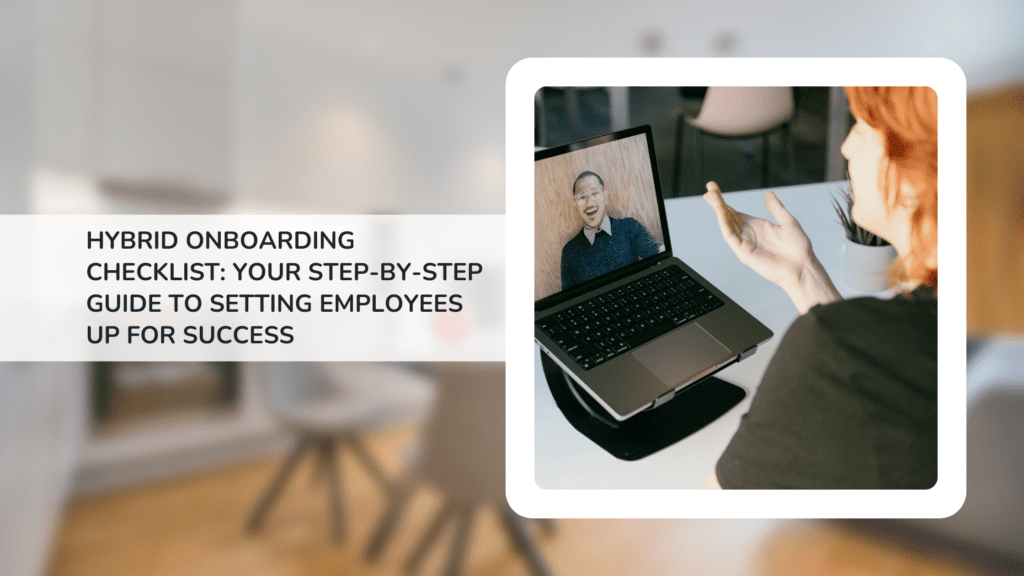Let’s face it: managing people is complex. Everyone brings their own style, motivation, and way of working to the table. And while experience and intuition go a long way, today’s managers need more than that to lead effectively.
Learning how to understand human behaviour can be that extra something. Backed by research and real-world data, behavioral insights help managers understand what drives their team members, including how they think, how they make decisions, and what they need to thrive. It’s a smarter, more informed way to lead, and it’s quickly becoming a must-have skill in modern workplaces.
In the sections ahead, we’ll break down what behavioral insights are, why they matter, and how you can use them to become a more effective, people-first leader.
Table of Contents
- What Are Behavioral Insights?
- The Science Behind Behavioral Insights
- Why Behavioral Insights Matter for Managers
- Key Behavioural Assessment Programs
- Applying Behavioral Insights in Leadership Practice
- Next Steps for Managers
- Author Bio
What Are Behavioral Insights?

Behavioral insights are all about understanding how people behave, not how we think they should. They’re based on real-world observations, patterns, and data that show what drives decision-making, communication, motivation, and teamwork.
Using this information helps managers make informed decisions, support individual needs, and create stronger, more effective teams.
Highly data-driven organizations are three times more likely to report improvements in decision-making than those that rely less on data.
While focusing on the intricacies of human behavior, managers also need to maintain administrative efficiency to maximize their time for high-impact leadership activities.
Simple tasks, like converting a Word to PDF for various reports or presentations, contribute to a smoother workflow, allowing more focus on applying behavioral insights to team dynamics rather than wrestling with document compatibility.
The Science Behind Behavioral Insights
Behavioral insights are backed by decades of research in psychology and neuroscience. Studies show that the way people make decisions, respond to feedback, and interact with others is often influenced by patterns in the brain that we’re not even aware of.
Take Daniel Kahneman and Amos Tverky’s work, for example. Their research uncovered how people rely on mental shortcuts, or “heuristics,” when making choices, especially under pressure.
This concept of behavioral economics laid the foundation for behavioural science as we know it today. Meanwhile, neuroscience studies using brain imaging have shown that social rewards, such as recognition and a sense of belonging, activate the same regions of the brain as physical rewards, including food or money.
So, when someone says they “just don’t feel motivated,” there’s often a deeper explanation. Brain scans show that motivation is linked to dopamine levels and can shift depending on whether a person feels valued, safe, or included at work.
Why Behavioral Insights Matter for Managers

Here are three ways behavioral insights pay off in the real world:
- Improved team engagement: When employees feel understood, they’re more likely to stay involved and motivated. Behavioral insights help managers recognize what truly drives each team member, whether it’s recognition, growth opportunities, or a sense of purpose.
- Tailored communication: Not everyone processes information the same way. Behavioral insights provide managers with a roadmap for effective communication.
- More effective performance feedback: Generic performance reviews don’t work for everyone. With behavioral insights, managers can tailor feedback to each employee’s preferred method of receiving it.
Key Behavioural Assessment Programs
Gaining a deep understanding of how people work is one of the most valuable tools a manager can have. That’s why Outback offers a range of behavioral assessment programs to help leaders unlock individual potential, build stronger teams, and improve collaboration across the board.
Building Strategic Teams with StrengthsFinder
Every team is full of potential. It just takes the right insight to unlock it. The Building Strategic Teams with StrengthsFinder program can help you do just that.
This hands-on workshop provides managers with a practical approach to identifying each team member’s strengths and leveraging those talents to foster better collaboration and alignment.
Discovering Workstyles with DiSC
It’s a good thing for a team to be made up of different personalities. However, it can also lead to misunderstandings, especially when individuals have very different communication styles or working methods.
DiSC can help with this by allowing managers and teams to identify individual workstyle preferences through the DiSC model:
- Dominance
- Influence
- Steadiness
- Conscientiousness
Self-Discovery with Myers-Briggs
When people understand how they naturally think, communicate, and make decisions, they can show up more confidently and work more effectively.
Self-Discovery with Myers-Briggs provides teams and managers with an opportunity to explore their preferences using the trusted Myers-Briggs Type Indicator (MBTI).
Applying Behavioral Insights in Leadership Practice

Ready to put insights into action? Here are three practical tactics managers can start using right away:
- Customize feedback conversations: Use your knowledge of each team member’s communication and motivation style to tailor your approach to feedback.
- Run insight-driven team meetings: Review the behavioral profiles of your team members before leading a meeting. This helps you plan the format, pace, and flow in a wau that suits the group.
- Design roles around strengths: Revisit how responsibilities are divided across your team. Are people working in ways that match their natural strengths?
Measuring the Impact of Behavioral Insights
To understand the return on these efforts, consider tracking these simple, high-impact metrics:
- Employee engagement scores
- Retention rates
- Productivity KPIs
- Team health check-ins
Additionally, consider using software for internal communication that enables managers to track how information flows across teams.
Another tool to consider is productivity management software, which provides managers with a clearer view of work patterns without micromanaging. When combined with behavioral data, it helps identify when employees are overwhelmed, underutilized, or in need of better goal alignment.
Next Steps for Managers
Understanding people is the first step to effective talent management. Putting that understanding into practice is where the real results occur.
And that’s all thanks to behavioral science.
Whether you’re looking to boost team engagement, improve communication, or align your team for long-term success, behavioural insights can help you get there faster, with more clarity and confidence.
Explore Outback Team Building’s behavioural assessment programs to find the right fit for your team. These workshops are practical, engaging, and designed to deliver real results, starting with more decisive leadership and more connected teams.
Request a quote today to get started.
Author Bio
Mike Bandar
Mike Bandar is an award-winning UK-based entrepreneur. A Founding Partner of Turn Partners, the startup studio focused on the acquisition, turnaround, or creation of digital businesses. Through Turn Partners, Mike co-founded Hopper HQ the Instagram planning and scheduling tool, working with thousands of influencers, brands and agencies around the world.



